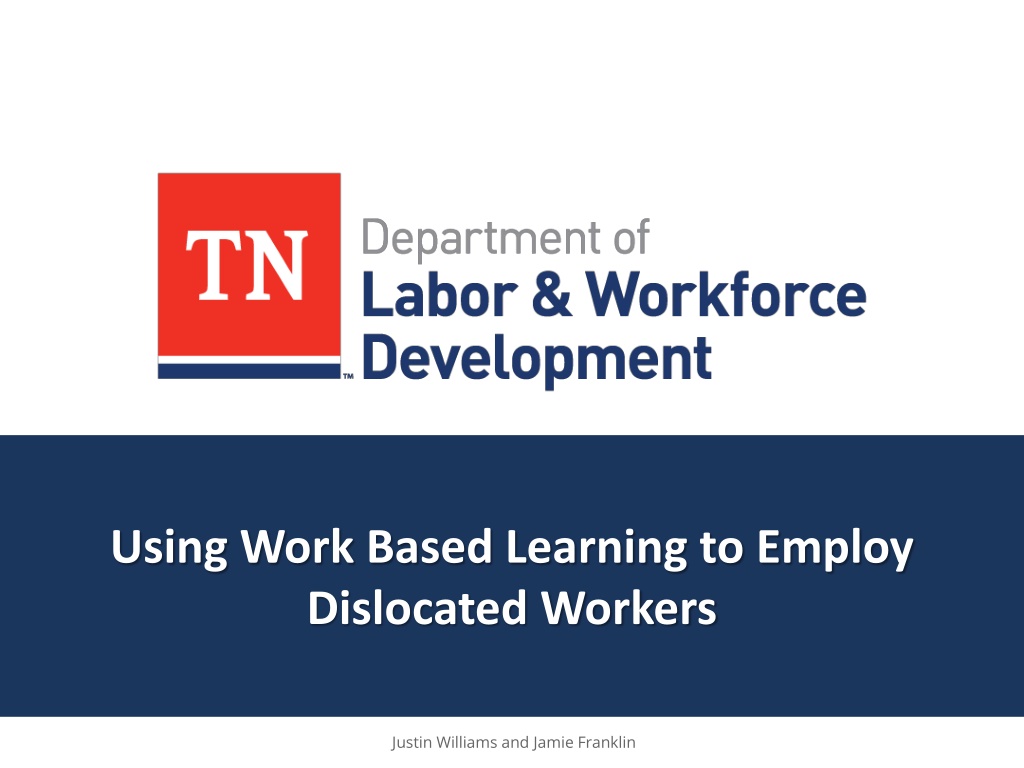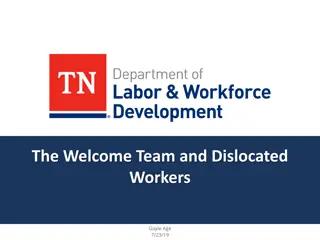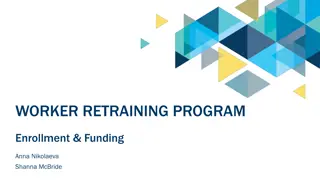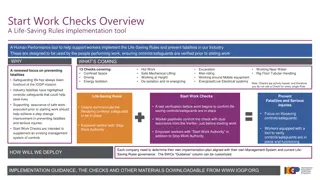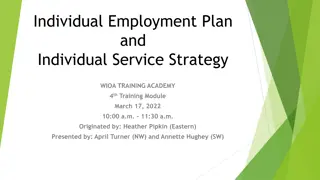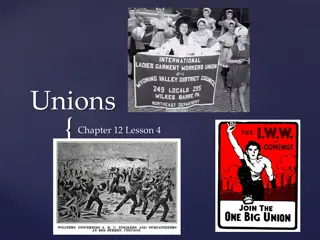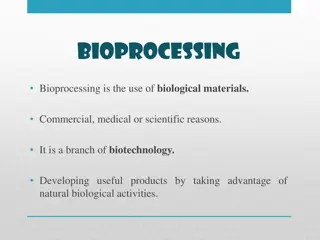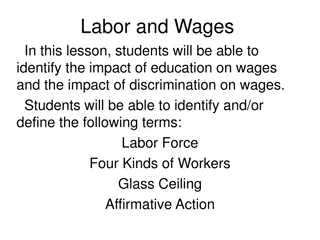Leveraging Work-Based Learning for Employing Dislocated Workers
Work-based learning (WBL) offers a proactive approach to connect dislocated workers with high-demand careers through apprenticeships, internships, and on-the-job training. Registered Apprenticeships provide innovative earn-and-learn programs, while On-the-Job Training offers additional skills development for new hires. Overcoming myths about apprenticeships being limited to trades, this approach bridges the skill gap and empowers individuals affected by layoffs or closures to secure sustainable employment.
Download Presentation

Please find below an Image/Link to download the presentation.
The content on the website is provided AS IS for your information and personal use only. It may not be sold, licensed, or shared on other websites without obtaining consent from the author. Download presentation by click this link. If you encounter any issues during the download, it is possible that the publisher has removed the file from their server.
E N D
Presentation Transcript
Using Work Based Learning to Employ Dislocated Workers Justin Williams and Jamie Franklin
Defining Dislocated Workers Anyone laid off through no fault of their own. Including those affected by reduction in force, mass layoff, or closure Self-employed, but now unemployed because of natural disaster Displaced Homemaker Exiting military service member (veteran) Or qualifying spouse of military service member
Defining Work-Based Learning Work-based learning (WBL) is a proactive approach to bridging the gap between workers and high-demand, high- skill careers. It is an arrangement that includes a paid work component and an educational or instructional element, wherein an individual obtains relevant knowledge and skills. This can include: Apprenticeships Internships On-the-JobTraining
Apprenticeship WHAT IS REGISTERED APPRENTICESHIP? Registered Apprenticeships (RA) are innovative work- based career programs that include postsecondary earn- and-learn models meeting national standards for registration, provide on-the-job training and job-related technical instruction with incremental wage increases, and are conducted under the direction of a mentor.
On-the-Job Training (OJT) WHAT IS On-the-Job Training? On-the-Job Training is used when an employer identifies the need to fill vacant positions and is willing to hire people who need additional training. OJTs can pay 50% of the trainee s wages during a specific time frame OJTs can be used in conjunction with an apprenticeship program Participants must be new hires to the company
Apprenticeship Apprenticeship Myths Apprenticeships are only for trades people People are better off going to college Apprenticeships are only for people who did not do well in college There is no support from Businesses Apprenticeships do not lead to full time work
Apprenticeship Return on Investment The return on investment for a registered apprenticeship program is: $1.46 for every $1 invested in an apprentice. 89% three-year retention rate. Moreover, 94% of apprentices retain employment after conclusion of the apprenticeship program. A 2012 Mathematica evaluation of 10 States found that for every $1 invested in Apprenticeship, return on investment was $27.
Where Do Dislocated Workers fit in? Dislocated Workers are a perfect fit for these WBL because: They tend to already have soft skills They may already have some of the skills needed in the new job, putting them ahead of a typical new hire They should qualify for Title I Dislocated Worker funding, therefore allowing the LWDA to cover some of the training costs and/or salary They could qualify for supportive/wrap-around services, ensuring that they get to work successfully and reduce absenteeism
Best Practices Work with businesses within the industry sectors as defined by local plan Go to where the businesses are Chamber of Commerce, SCHRM, etc. Case Managers should be aware of all open contracts with the LWDA to include Apprenticeships that are seeking new hires Talk with businesses who are in a hiring cycle and provide information on the benefits and availability of OJTs and Apprenticeships Talk with other LWDAs in your region who are utilizing OJTs and Apprenticeships
Questions? Tennessee Department of Labor & Workforce Development Attn: Workforce Services (4-B) 220 French Landing Drive Nashville, TN 37243
